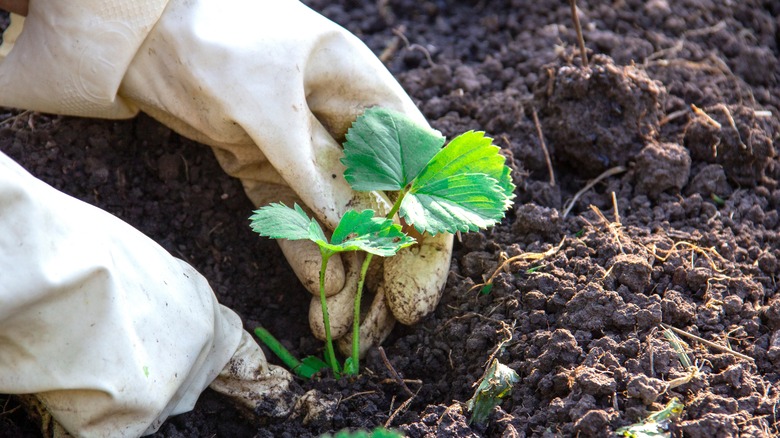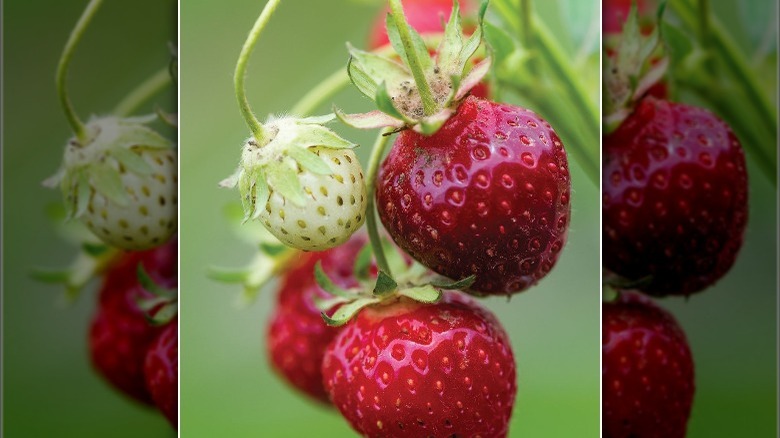Cornell University Once Created Purple Strawberries
The elusive purple strawberry. Celebrated for its deep, rich, almost regal tones, sweet flavor, and aromatic scent, it's rarely spotted in grocery stores. But you can grow your own.
Developed at Cornell University's small fruits and breeding program over the course of 13 years, the aptly-named Purple Wonder strawberry made its official debut at the Philadelphia International Flower Show in March 2012 when Cornell partnered with W. Atlee Burpee Co. At the time, the seed giant was actively seeking new seed varieties to add to its consumer portfolio, particularly those that were easy-to-cultivate berries deemed suitable for backyard growing and container gardening while also being hardy enough to thrive in wide-ranging climates. Cornell's Purple Wonder fit the bill and was ready for market. It was a perfect match (per Cornell University).
Courtney Weber, a small fruits breeder and associate professor at Cornell University, was the person responsible for developing the Purple Wonder. She described its taste as being sweet with outstanding strawberry flavor (per Cornell University). But it's the berries' unique color that really sets Purple Wonders apart from your average grocery-store strawberries. The plants bear medium-sized berries that ripen from creamy white to red to deep purple-burgundy (per Cornell University). Unlike regular red strawberries, the regal coloring permeates the entire berry, making it wow-factor worthy when it's presented as part of a meal.
How do you make a purple strawberry?
Creating a new variety of any plant can be a complicated process or it can happen just by accident. So, long story, short(er): Plants reproduce via cuttings or seeds (according to Plantui). Strawberries reproduce through the runners that shoot from each plant and through seeds. Runners produce the exact same fruit as the parent plant. Seedlings, affected by pollination and fertilization, adapt to changing growing conditions. Growers in the 17th and 18th centuries noticed the difference and began to purposefully interbreed different varieties of plants, experimenting with combinations and conditions, to develop adaptable food sources (per Plantui).
That, in a nutshell, is what Weber did at Cornell. In fact, the Purple Wonder strawberry is just one of many varieties cultivated at Cornell's small fruits breeding program. Others include the disease-resistant Herriot strawberry and Crimson Treasure; a high-yielding, fall-harvest raspberry. While the primary goal of the Cornell program is to produce hardy and adaptable plants, Weber admits flavor is the ultimate deciding factor when it comes to marketing new varieties.
Also important to note, as Strawberry Plants points out, Purple Wonders are not genetically modified. Instead, they were cultivated through the extensive cross-breeding of natural varieties of strawberries.

